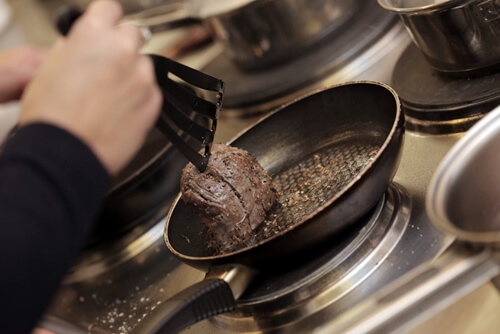Glossary of Vague Cooking Measurements

Whether you’re learning European, Asian, South American or American cooking techniques, you have to know the terms that define your craft. If you come across a word in a cookbook you don’t recognize, you could end up using the wrong technique – after all, braising is quite different than broiling. As such, there are certain measurement vocabulary terms that are notoriously unhelpful or vague. As you continue your journey down the road to culinary glory, you’ll likely encounter these seemingly arcane words:
Dollop
Webster defines “dollop” as “a small amount of soft food.” Thanks a lot, Webster. Daisy sour cream made the measurement famous with their ad campaign featuring the slogan, “Do a dollop of daisy.” While the jingle might still be stuck in the heads of many Americans, most cooks only have a general idea of how much a dollop actually is. Is it a tablespoon? A cup? No one can say for sure. Fortunately, a dollop is generally called for in recipes where exact amounts aren’t necessary to the success of the dish.
Dash
Originally used as an amount for wet ingredients, a dash of something is now commonly also used for dry measurements. The term refers to a gesture (as does pinch) in which you toss the ingredient into the pot, bowl, etc. Some cookbook publishers have tried to quantify dash more accurately as 1/8 teaspoon, though a consensus has yet to be reached.
Culinary & Pastry Career Survey
Culinary & Pastry Career Survey
What's your ideal culinary career? Answer 20 simple questions and see if your dream career gets revealed to you.

We’ve compiled of all of the essential questions into one handy guide: Career options, description of skill requirements, and more!


Pinch
While the act of pinching salt between two fingers and sprinkling it over your food seems simple enough, the precise amount indicated by a pinch is unknown. Fortunately, the exact amount isn’t necessary in most recipes where “a pinch” is called for – most often pinch is used for spices or seasoning.
Smidgen
Another small, indefinite measurement, a smidgen is refers to an amount so miniscule it’s hard to quantify. Some contend that a smidgen is half a pinch, which is half a dash. If you break it down, a pinch would be 1/16 of a teaspoon while a smidgen would be 1/32 of a teaspoon. As you can see, the amounts are so small that most people wouldn’t go through the trouble of measuring them. As a result, smidgen has become the vague replacement term.
The juice of a fruit
Many recipes call for the juice of a lemon, orange or lime. While this measurement might sound straight forward, such citrus fruits can vary in size and the amount of juice they contain. When presented with this measurement, follow it, but always taste what you’re cooking. Is the sauce too acidic or not enough? Tasting lets you adjust whatever it is your making to have the right balance of ingredients and flavor profiles.


